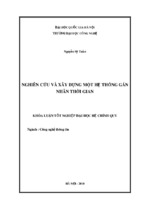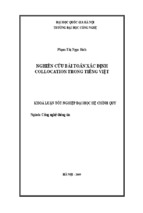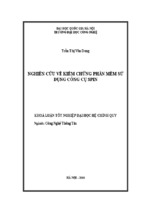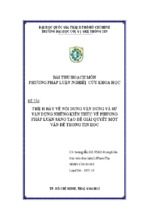The Little Black Book
of
Computer Viruses
Volume One:
The Basic Technology
By
Mark A. Ludwig
American Eagle Publications, Inc.
Post Office Box 1507
Show Low, Arizona 85901
- 1996 -
Copyright 1990 By Mark A. Ludwig
Virus drawings and cover design by Steve Warner
This electronic edition of The Little Black Book of Computer Viruses is
copyright 1996 by Mark A. Ludwig. This original Adobe Acrobat file
may be copied freely in unmodified form. Please share it, upload it,
download it, etc. This document may not be distributed in printed form
or modified in any way without written permission from the publisher.
Library of Congress Cataloging-in-Publication Data
Ludwig, Mark A.
The little black book of computer viruses / by Mark A. Ludwig.
p. cm.
Includes bibliographical references (p. ) and index.
ISBN 0-929408-02-0 (v. 1) : $14.95
1. Computer viruses I. Title
QA76.76.C68L83 1990
005.8- -dc20
And God saw that it was good.
And God blessed them, saying " Be fruitful
and multiply."
Genesis 1:21,22
Preface to the Electronic Edition
The Little Black Book of Computer Viruses has seen five
good years in print. In those five years it has opened a door to
seriously ask the question whether it is better to make technical
information about computer viruses known or not.
When I wrote it, it was largely an experiment. I had no idea
what would happen. Would people take the viruses it contained and
rewrite them to make all kinds of horrificly destructive viruses? Or
would they by and large be used responsibly? At the time I wrote,
no anti-virus people would even talk to me, and what I could find
in print on the subject was largely unimpressive from a factual
standpoint—lots of hype and fear-mongering, but very little solid
research that would shed some light on what might happen if I
released this book. Being a freedom loving and knowledge seeking
American, I decided to go ahead and do it—write the book and get
it in print. And I decided that if people did not use it responsibly, I
would withdraw it.
Five years later, I have to say that I firmly believe the book
has done a lot more good than harm.
On the positive side, lots and lots of people who desperately need this kind of information—people who are responsible
for keeping viruses off of computers—have now been able to get
it. While individual users who have limited contact with other
computer users may be able to successfully protect themselves with
an off-the-shelf anti-virus, experience seems to be proving that such
is not the case when one starts looking at the network with 10,000
The Little Black Book of Computer Viruses
users on it. For starters, very few anti-virus systems will run on
10,000 computers with a wide variety of configurations, etc. Secondly, when someone on the network encounters a virus, they have
to be able to talk to someone in the organization who has the
detailed technical knowledge necessary to get rid of it in a rational
way. You can’t just shut such a big network down for 4 days while
someone from your a-v vendor’s tech support staff is flown in to
clean up, or to catch and analyze a new virus.
Secondly, people who are just interested in how things
work have finally been able to learn a little bit about computer
viruses. It is truly difficult to deny that they are interesting. The idea
of a computer program that can take off and gain a life completely
independent of its maker is, well, exciting. I think that is important.
After all, many of the most truly useful inventions are made not by
giant, secret, government-funded labs, but by individuals who have
their hands on something day in and day out. They think of a way
to do something better, and do it, and it changes the world. However,
that will never happen if you can’t get the basic information about
how something works. It’s like depriving the carpenter of his
hammer and then asking him to figure out a way to build a better
building.
At the same time, I have to admit that this experiment called
The Little Black Book has not been without its dangers. The Stealth
virus described in its pages has succeeded in establishing itself in
the wild, and, as of the date of this writing it is #8 on the annual
frequency list, which is a concatenation of the most frequently
found viruses in the wild. I am sorry that it has found its way into
the wild, and yet I find here a stroke of divine humor directed at
certain anti-virus people. There is quite a history behind this virus.
I will touch on it only briefly because I don’t want to bore you with
my personal battles. In the first printing of The Little Black Book,
the Stealth was designed to format an extra track on the disk and
hide itself there. Of course, this only worked on machines that had
a BIOS which did not check track numbers and things like that—
particularly, on old PCs. And then it did not infect disks every time
they were accessed. This limited its ability to replicate. Some
anti-virus developers commented to me that they thought this was
Preface to the Electronic Edition
a poor virus for that reason, and suggested I should have done it
differently. I hesitated to do that, I said, because I did not want it to
spread too rapidly.
Not stopping at making such suggestions, though, some of
these same a-v people lambasted me in print for having published
“lame” viruses. Fine, I decided, if they are going to criticize the
book like that, we’ll improve the viruses. Next round at the printer,
I updated the Stealth virus to work more like the Pakistani Brain,
hiding its sectors in areas marked bad in the FAT table, and to infect
as quickly as Stoned. It still didn’t stop these idiotic criticisms,
though. As late as last year, Robert Slade was evaluating this book
in his own virus book and finding it wanting because the viruses it
discussed weren’t very successful at spreading. He thought this
objective criticism. From that date forward, it would appear that
Stealth has done nothing but climb the wild-list charts. Combining
aggressive infection techniques with a decent stealth mechanism
has indeed proven effective . . . too effective for my liking, to tell
the truth. It’s never been my intention to write viruses that will make
it to the wild list charts. In retrospect, I have to say that I’ve learned
to ignore idiotic criticism, even when the idiots want to make me
look like an idiot in comparison to their ever inscrutable wisdom.
In any event, the Little Black Book has had five good years
as a print publication. With the release of The Giant Black Book of
Computer Viruses, though, the publisher has decided to take The
Little Black Book out of print. They’ve agreed to make it available
in a freeware electronic version, though, and that is what you are
looking at now. I hope you’ll find it fun and informative. And if you
do, check out the catalog attached to it here for more great information about viruses from the publisher.
Mark Ludwig
February 22, 1996
Introduction
This is the first in a series of three books about computer
viruses. In these volumes I want to challenge you to think in new
ways about viruses, and break down false concepts and wrong ways
of thinking, and go on from there to discuss the relevance of
computer viruses in today’s world. These books are not a call to a
witch hunt, or manuals for protecting yourself from viruses. On the
contrary, they will teach you how to design viruses, deploy them,
and make them better. All three volumes are full of source code for
viruses, including both new and well known varieties.
It is inevitable that these books will offend some people.
In fact, I hope they do. They need to. I am convinced that computer
viruses are not evil and that programmers have a right to create
them, posses them and experiment with them. That kind of a stand
is going to offend a lot of people, no matter how it is presented.
Even a purely technical treatment of viruses which simply discussed how to write them and provided some examples would be
offensive. The mere thought of a million well armed hackers out
there is enough to drive some bureaucrats mad. These books go
beyond a technical treatment, though, to defend the idea that viruses
can be useful, interesting, and just plain fun. That is bound to prove
even more offensive. Still, the truth is the truth, and it needs to be
spoken, even if it is offensive. Morals and ethics cannot be determined by a majority vote, any more than they can be determined
by the barrel of a gun or a loud mouth. Might does not make right.
2
The Little Black Book of Computer Viruses
If you turn out to be one of those people who gets offended
or upset, or if you find yourself violently disagreeing with something I say, just remember what an athletically minded friend of
mine once told me: “No pain, no gain.” That was in reference to
muscle building, but the principle applies intellectually as well as
physically. If someone only listens to people he agrees with, he will
never grow and he’ll never succeed beyond his little circle of
yes-men. On the other hand, a person who listens to different ideas
at the risk of offense, and who at least considers that he might be
wrong, cannot but gain from it. So if you are offended by something
in this book, please be critical—both of the book and of yourself—
and don’t fall into a rut and let someone else tell you how to think.
From the start I want to stress that I do not advocate
anyone’s going out and infecting an innocent party’s computer
system with a malicious virus designed to destroy valuable data or
bring their system to a halt. That is not only wrong, it is illegal. If
you do that, you could wind up in jail or find yourself being sued
for millions. However this does not mean that it is illegal to create
a computer virus and experiment with it, even though I know some
people wish it was. If you do create a virus, though, be careful with
it. Make sure you know it is working properly or you may wipe out
your own system by accident. And make sure you don’t inadvertently release it into the world, or you may find yourself in a legal
jam . . . even if it was just an accident. The guy who loses a year’s
worth of work may not be so convinced that it was an accident. And
soon it may be illegal to infect a computer system (even your own)
with a benign virus which does no harm at all. The key word here
is responsibility. Be responsible. If you do something destructive,
be prepared to take responsibility. The programs included in this
book could be dangerous if improperly used. Treat them with the
respect you would have for a lethal weapon.
This first of three volumes is a technical introduction to the
basics of writing computer viruses. It discusses what a virus is, and
how it does its job, going into the major functional components of
the virus, step by step. Several different types of viruses are
developed from the ground up, giving the reader practical how-to
information for writing viruses. That is also a prerequisite for
decoding and understanding any viruses one may run across in his
Introduction
3
day to day computing. Many people think of viruses as sort of a
black art. The purpose of this volume is to bring them out of the
closet and look at them matter-of-factly, to see them for what they
are, technically speaking: computer programs.
The second volume discusses the scientific applications of
computer viruses. There is a whole new field of scientific study
known as artificial life (AL) research which is opening up as a result
of the invention of viruses and related entities. Since computer
viruses are functionally similar to living organisms, biology can
teach us a lot about them, both how they behave and how to make
them better. However computer viruses also have the potential to
teach us something about living organisms. We can create and
control computer viruses in a way that we cannot yet control living
organisms. This allows us to look at life abstractly to learn about
what it really is. We may even reflect on such great questions as the
beginning and subsequent evolution of life.
The third volume of this series discusses military applications for computer viruses. It is well known that computer viruses
can be extremely destructive, and that they can be deployed with
minimal risk. Military organizations throughout the world know
that too, and consider the possibility of viral attack both a very real
threat and a very real offensive option. Some high level officials in
various countries already believe their computers have been attacked for political reasons. So the third volume will probe military
strategies and real-life attacks, and dig into the development of viral
weapon systems, defeating anti-viral defenses, etc.
You might be wondering at this point why you should
spend time studying these volumes. After all, computer viruses
apparently have no commercial value apart from their military
applications. Learning how to write them may not make you more
employable, or give you new techniques to incorporate into programs. So why waste time with them, unless you need them to sow
chaos among your enemies? Let me try to answer that: Ever since
computers were invented in the 1940’s, there has been a brotherhood of people dedicated to exploring the limitless possibilities of
these magnificent machines. This brotherhood has included famous
mathematicians and scientists, as well as thousands of unnamed
hobbyists who built their own computers, and programmers who
4
The Little Black Book of Computer Viruses
love to dig into the heart of their machines. As long as computers
have been around, men have dreamed of intelligent machines which
would reason, and act without being told step by step just what to
do. For many years this was purely science fiction. However, the
very thought of this possibility drove some to attempt to make it a
reality. Thus “artificial intelligence” was born. Yet AI applications
are often driven by commercial interests, and tend to be colored by
that fact. Typical results are knowledge bases and the like—useful,
sometimes exciting, but also geared toward putting the machine to
use in a specific way, rather than to exploring it on its own terms.
The computer virus is a radical new approach to this idea
of “living machines.” Rather than trying to design something which
poorly mimics highly complex human behavior, one starts by trying
to copy the simplest of living organisms. Simple one-celled organisms don’t do very much. The most primitive organisms draw
nutrients from the sea in the form of inorganic chemicals, and take
energy from the sun, and their only goal is apparently to survive
and to reproduce. They aren’t very intelligent, and it would be tough
to argue about their metaphysical aspects like “soul.” Yet they do
what they were programmed to do, and they do it very effectively.
If we were to try to mimic such organisms by building a machine—
a little robot—which went around collecting raw materials and
putting them together to make another little robot, we would have
a very difficult task on our hands. On the other hand, think of a
whole new universe—not this physical world, but an electronic one,
which exists inside of a computer. Here is the virus’ world. Here it
can “live” in a sense not too different from that of primitive
biological life. The computer virus has the same goal as a living
organism—to survive and to reproduce. It has environmental obstacles to overcome, which could “kill” it and render it inoperative.
And once it is released, it seems to have a mind of its own. It runs
off in its electronic world doing what it was programmed to do. In
this sense it is very much alive.
There is no doubt that the beginning of life was an important milestone in the history of the earth. However, if one tries to
consider it from the viewpoint of inanimate matter, it is difficult to
imagine life as being much more than a nuisance. We usually
assume that life is good and that it deserves to be protected.
Introduction
5
However, one cannot take a step further back and see life as
somehow beneficial to the inanimate world. If we consider only the
atoms of the universe, what difference does it make if the temperature is seventy degrees farenheit or twenty million? What difference
would it make if the earth were covered with radioactive materials?
None at all. Whenever we talk about the environment and ecology,
we always assume that life is good and that it should be nurtured
and preserved. Living organisms universally use the inanimate
world with little concern for it, from the smallest cell which freely
gathers the nutrients it needs and pollutes the water it swims in,
right up to the man who crushes up rocks to refine the metals out
of them and build airplanes. Living organisms use the material
world as they see fit. Even when people get upset about something
like strip mining, or an oil spill, their point of reference is not that
of inanimate nature. It is an entirely selfish concept (with respect
to life) that motivates them. The mining mars the beauty of the
landscape—a beauty which is in the eye of the (living) beholder—
and it makes it uninhabitable. If one did not place a special
emphasis on life, one could just as well promote strip mining as an
attempt to return the earth to its pre-biotic state!
I say all of this not because I have a bone to pick with
ecologists. Rather I want to apply the same reasoning to the world
of computer viruses. As long as one uses only financial criteria to
evaluate the worth of a computer program, viruses can only be seen
as a menace. What do they do besides damage valuable programs
and data? They are ruthless in attempting to gain access to the
computer system resources, and often the more ruthless they are,
the more successful. Yet how does that differ from biological life?
If a clump of moss can attack a rock to get some sunshine and grow,
it will do so ruthlessly. We call that beautiful. So how different is
that from a computer virus attaching itself to a program? If all one
is concerned about is the preservation of the inanimate objects
(which are ordinary programs) in this electronic world, then of
course viruses are a nuisance.
But maybe there is something deeper here. That all depends
on what is most important to you, though. It seems that modern
culture has degenerated to the point where most men have no higher
goals in life than to seek their own personal peace and prosperity.
6
The Little Black Book of Computer Viruses
By personal peace, I do not mean freedom from war, but a freedom
to think and believe whatever you want without ever being challenged in it. More bluntly, the freedom to live in a fantasy world of
your own making. By prosperity, I mean simply an ever increasing
abundance of material possessions. Karl Marx looked at all of
mankind and said that the motivating force behind every man is his
economic well being. The result, he said, is that all of history can
be interpreted in terms of class struggles—people fighting for
economic control. Even though many in our government decry
Marx as the father of communism, our nation is trying to squeeze
into the straight jacket he has laid for us. That is why two of George
Bush’s most important campaign promises were “four more years
of prosperity” and “no new taxes.” People vote their wallets, even
when they know the politicians are lying through the teeth.
In a society with such values, the computer becomes
merely a resource which people use to harness an abundance of
information and manipulate it to their advantage. If that is all there
is to computers, then computer viruses are a nuisance, and they
should be eliminated. Surely there must be some nobler purpose
for mankind than to make money, though, even though that may be
necessary. Marx may not think so. The government may not think
so. And a lot of loud-mouthed people may not think so. Yet great
men from every age and every nation testify to the truth that man
does have a higher purpose. Should we not be as Socrates, who
considered himself ignorant, and who sought Truth and Wisdom,
and valued them more highly than silver and gold? And if so, the
question that really matters is not how computers can make us
wealthy or give us power over others, but how they might make us
wise. What can we learn about ourselves? about our world? and,
yes, maybe even about God? Once we focus on that, computer
viruses become very interesting. Might we not understand life a
little better if we can create something similar, and study it, and try
to understand it? And if we understand life better, will we not
understand our lives, and our world better as well?
A word of caution first: Centuries ago, our nation was
established on philosophical principles of good government, which
were embodied in the Declaration of Independence and the Constitution. As personal peace and prosperity have become more impor-
Introduction
7
tant than principles of good government, the principles have been
manipulated and redefined to suit the whims of those who are in
power. Government has become less and less sensitive to civil
rights, while it has become easy for various political and financial
interests to manipulate our leaders to their advantage.
Since people have largely ceased to challenge each other
in what they believe, accepting instead the idea that whatever you
want to believe is OK, the government can no longer get people to
obey the law because everyone believes in a certain set of principles
upon which the law is founded. Thus, government must coerce
people into obeying it with increasingly harsh penalties for disobedience—penalties which often fly in the face of long established
civil rights. Furthermore, the government must restrict the average
man’s ability to seek recourse. For example, it is very common for
the government to trample all over long standing constitutional
rights when enforcing the tax code. The IRS routinely forces
hundreds of thousands of people to testify against themselves. It
routinely puts the burden of proof on the accused, seizes his assets
without trial, etc., etc. The bottom line is that it is not expedient for
the government to collect money from its citizens if it has to prove
their tax documents wrong. The whole system would break down
in a massive overload. Economically speaking, it is just better to
put the burden of proof on the citizen, Bill of Rights or no.
Likewise, to challenge the government on a question of
rights is practically impossible, unless your case happens to serve
the purposes of some powerful special interest group. In a standard
courtroom, one often cannot even bring up the subject of constitutional rights. The only question to be argued is whether or not some
particular law was broken. To appeal to the Supreme Court will cost
millions, if the politically motivated justices will even condescend
to hear the case. So the government becomes practically all-powerful, God walking on earth, to the common man. One man seems
to have little recourse but to blindly obey those in power.
When we start talking about computer viruses, we’re treading on some ground that certain people want to post a “No Trespassing” sign on. The Congress of the United States has considered
a “Computer Virus Eradication Act” which would make it a felony
to write a virus, or for two willing parties to exchange one. Never
8
The Little Black Book of Computer Viruses
mind that the Constitution guarantees freedom of speech and
freedom of the press. Never mind that it guarantees the citizens the
right to bear military arms (and viruses might be so classified).
While that law has not passed as of this writing, it may by the time
you read this book. If so, I will say without hesitation that it is a
miserable tyranny, but one that we can do little about . . . for now.
Some of our leaders may argue that many people are not
capable of handling the responsibility of power that comes with
understanding computer viruses, just as they argue that people are
not able to handle the power of owning assault rifles or machine
guns. Perhaps some cannot. But I wonder, are our leaders any better
able to handle the much more dangerous weapons of law and
limitless might? Obviously they think so, since they are busy trying
to centralize all power into their own hands. I disagree. If those in
government can handle power, then so can the individual. If the
individual cannot, then neither can his representatives, and our end
is either tyranny or chaos anyhow. So there is no harm in attempting
to restore some small power to the individual.
But remember: truth seekers and wise men have been
persecuted by powerful idiots in every age. Although computer
viruses may be very interesting and worthwhile, those who take an
interest in them may face some serious challenges from base men.
So be careful.
Now join with me and take the attitude of early scientists.
These explorers wanted to understand how the world worked—and
whether it could be turned to a profit mattered little. They were
trying to become wiser in what’s really important by understanding
the world a little better. After all, what value could there be in
building a telescope so you could see the moons around Jupiter?
Galileo must have seen something in it, and it must have meant
enough to him to stand up to the ruling authorities of his day and
do it, and talk about it, and encourage others to do it. And to land
in prison for it. Today some people are glad he did.
So why not take the same attitude when it comes to creating
life on a computer? One has to wonder where it might lead. Could
there be a whole new world of electronic life forms possible, of
which computer viruses are only the most rudimentary sort? Perhaps they are the electronic analog of the simplest one-celled
Introduction
9
creatures, which were only the tiny beginning of life on earth. What
would be the electronic equivalent of a flower, or a dog? Where
could it lead? The possibilities could be as exciting as the idea of a
man actually standing on the moon would have been to Galileo. We
just have no idea.
There is something in certain men that simply drives them
to explore the unknown. When standing at the edge of a vast ocean
upon which no ship has ever sailed, it is difficult not to wonder what
lies beyond the horizon just because the rulers of the day tell you
you’re going to fall of the edge of the world (or they’re going to
push you off) if you try to find out. Perhaps they are right. Perhaps
there is nothing of value out there. Yet other great explorers down
through the ages have explored other oceans and succeeded. And
one thing is for sure: we’ll never know if someone doesn’t look. So
I would like to invite you to climb aboard this little raft that I have
built and go exploring. . . .
The Basics of the Computer Virus
A plethora of negative magazine articles and books have
catalyzed a new kind of hypochondria among computer users: an
unreasonable fear of computer viruses. This hypochondria is possible because a) computers are very complex machines which will
often behave in ways which are not obvious to the average user, and
b) computer viruses are still extremely rare. Thus, most computer
users have never experienced a computer virus attack. Their only
experience has been what they’ve read about or heard about (and
only the worst problems make it into print). This combination of
ignorance, inexperience and fear-provoking reports of danger is the
perfect formula for mass hysteria.
Most problems people have with computers are simply
their own fault. For example, they accidentally delete all the files
in their current directory rather than in another directory, as they
intended, or they format the wrong disk. Or perhaps someone
routinely does something wrong out of ignorance, like turning the
computer off in the middle of a program, causing files to get
scrambled. Following close on the heels of these kinds of problems
are hardware problems, like a misaligned floppy drive or a hard
disk failure. Such routine problems are made worse than necessary
when users do not plan for them, and fail to back up their work on
a regular basis. This stupidity can easily turn a problem that might
have cost $300 for a new hard disk into a nightmare which will
ultimately cost tens of thousands of dollars. When such a disaster
happens, it is human nature to want to find someone or something
11
The Little Black Book of Computer Viruses
else to blame, rather than admitting it is your own fault. Viruses
have proven to be an excellent scapegoat for all kinds of problems.
Of course, there are times when people want to destroy
computers. In a time of war, a country may want to hamstring their
enemy by destroying their intelligence databases. If an employee
is maltreated by his employer, he may want to retaliate, and he may
not be able to get legal recourse. One can also imagine a totalitarian
state trying to control their citizens’ every move with computers,
and a group of good men trying to stop it. Although one could smash
a computer, or physically destroy its data, one does not always have
access to the machine that will be the object of the attack. At other
times, one may not be able to perpetrate a physical attack without
facing certain discovery and prosecution. While an unprovoked
attack, and even revenge, may not be right, people still do choose
such avenues (and even a purely defensive attack is sure to be
considered wrong by an arrogant agressor). For the sophisticated
programmer, though, physical access to the machine is not necessary to cripple it.
People who have attacked computers and their data have
invented several different kinds of programs. Since one must obviously conceal the destructive nature of a program to dupe somebody
into executing it, deceptive tricks are an absolute must in this game.
The first and oldest trick is the “trojan horse.” The trojan horse may
appear to be a useful program, but it is in fact destructive. It entices
you to execute it because it promises to be a worthwhile program
for your computer—new and better ways to make your machine
more effective—but when you execute the program, surprise! Secondly, destructive code can be hidden as a “logic bomb” inside of
an otherwise useful program. You use the program on a regular
basis, and it works well. Yet, when a certain event occurs, such as
a certain date on the system clock, the logic bomb “explodes” and
does damage. These programs are designed specifically to destroy
computer data, and are usually deployed by their author or a willing
associate on the computer system that will be the object of the
attack.
There is always a risk to the perpetrator of such destruction.
He must somehow deploy destructive code on the target machine
without getting caught. If that means he has to put the program on
The Basics of the Computer Virus
12
the machine himself, or give it to an unsuspecting user, he is at risk.
The risk may be quite small, especially if the perpetrator normally
has access to files on the system, but his risk is never zero.
With such considerable risks involved, there is a powerful
incentive to develop cunning deployment mechanisms for getting
destructive code onto a computer system. Untraceable deployment
is a key to avoiding being put on trial for treason, espionage, or
vandalism. Among the most sophisticated of computer programmers, the computer virus is the vehicle of choice for deploying
destructive code. That is why viruses are almost synonymous with
wanton destruction.
However, we must realize that computer viruses are not
inherently destructive. The essential feature of a computer program
that causes it to be classified as a virus is not its ability to destroy
data, but its ability to gain control of the computer and make a fully
functional copy of itself. It can reproduce. When it is executed, it
makes one or more copies of itself. Those copies may later be
executed, to create still more copies, ad infinitum. Not all computer
programs that are destructive are classified as viruses because they
do not all reproduce, and not all viruses are destructive because
reproduction is not destructive. However, all viruses do reproduce.
The idea that computer viruses are always destructive is deeply
ingrained in most people’s thinking though. The very term “virus”
is an inaccurate and emotionally charged epithet. The scientifically
correct term for a computer virus is “self-reproducing automaton,”
or “SRA” for short. This term describes correctly what such a
program does, rather than attaching emotional energy to it. We will
continue to use the term “virus” throughout this book though,
except when we are discussing computer viruses (SRA’s) and
biological viruses at the same time, and we need to make the
difference clear.
If one tries to draw an analogy between the electronic world
of programs and bytes inside a computer and the physical world we
know, the computer virus is a very close analog to the simplest
biological unit of life, a single celled, photosynthetic organism.
Leaving metaphysical questions like “soul” aside, a living organism can be differentiated from non-life in that it appears to have
two goals: (a) to survive, and (b) to reproduce. Although one can
- Xem thêm -




















